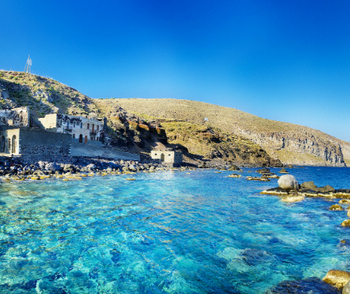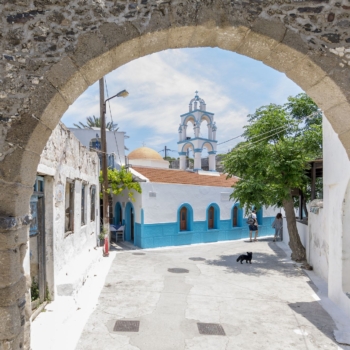Human figures move inside the crater, bend over seething holes, step the hot ground carefully led by the yellow lines and the crevasses. The scent of sulphur covers the whole area up until Nikia and the volcanic rocks form a unique palette of colors and figures contrasting the fertile areas of the valley of Lakki. It was created by the eruptions of the volcano of Nisyros, whose existence has been known since the antiquity. The volcano of Nisyros is the youngest of all the volcanoes of the Aegean. The oldest rocks emerged to the surface forming the peak of the main terrestrial cone, characteristic of the existing terrain of the island, approximately 160.000 years ago. In the following 120.000 years the creation of the cone was completed with a diameter of 7 km and a height of 600 m with sequencial eruptions of volcanic lava and ash. The two greater catastrophic eruptions, 25.000 to 15.000 years ago, caused ejection of magma and high quanity of pumice and ash as well as the sedimentation of the volcano’s peak. This is how the caldera of Nisyros was formed.
In historical times the eruptions of the volcano were hydrothermal in nature and came from the pressure exerted on the ground by the steam which is generated by the overheat of the rain and salt water after its contact with the molten magma of the subterrain. The result of this process was the appearance of aprroximately twenty craters in various points of the caldera. The so-called Stefanos, aged 3.000-4.000 years old, is one of the biggest, most dominating and better preserved hydrothermal craters in the world, with a depth of 27 m and a diameter of 330 m. The hot springs gush sulphurous gases and hot water (30-60 degrees Celcius). The latest eruptions of the volcano were in 1871 and 1877 creating the craters Polyvotis and Alexandros.
















